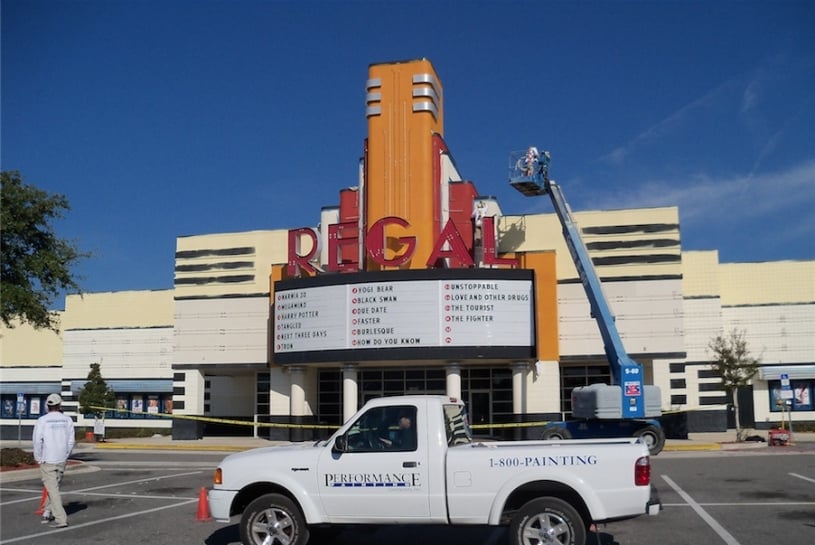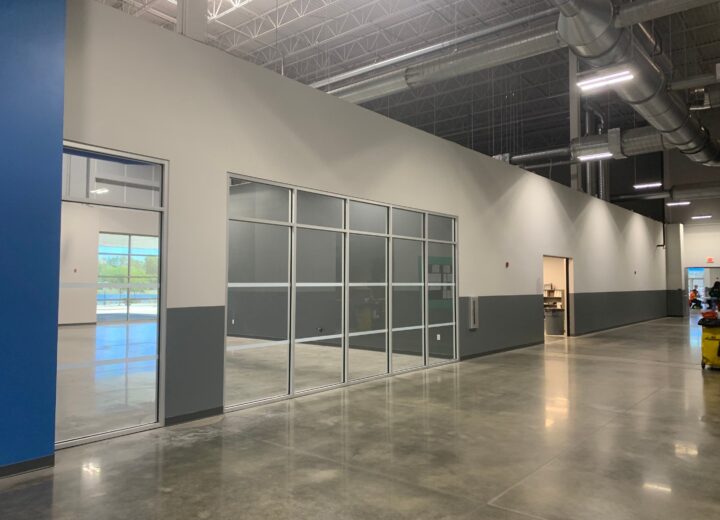
There are many businesses out there claiming to be commercial painting contractors. Naturally, though, they’re not all created equal.
Ask anyone who’s tried to plan and price a major commercial painting project and you’ll hear the same concerns come up: Whether the contractor can deliver the promised quality of work on time and within the expected budget.
Some companies consider commercial painting a “sideline” business and rely upon a set of their own sub-contractors when they have a big project to take care of. This leaves them – and in the long run, you – at the mercy of others who may not show up.
While this is the biggest hazard to avoid in commercial painting, there are several others.
By taking a systematic approach to selecting your painting vendor, you’re much more likely to get the quality you expect. Even if this is your very first commercial painting project, you don’t have to leave it to trial and error.
Instead, use our method:
1. Select Several Vendors to Get Bids From
Smaller companies will do everything possible to persuade you they’re qualified for your project thanks to its high profit potential. To avoid being taken in, get estimates from 3 different commercial painters. Start the process early with a Request for Information (RFI).
2. Develop a Complete Statement of Work
A full Statement of work should be completed as early as possible so vendors can make truly accurate bids. You should be ready to present a SOW to prospective contractors before you move forward with a Request for Proposal (RFP), which results in cost estimates for the whole project.
A SOW should include:
- The areas of your building to be painted
- Any surface preparations that you require
- Type of coatingst and layers of finish to use
- Any special considerations, like commercial drywall repair
- Any restrictions, such as night-only work
- The final deadline for the entire project
There may be aspects, such as paint quality and finish, you don’t have much detail on. Simply provide as much information as possible to clarify the objectives of the project. Vendors who respond to your RFP will be willing to discuss further. It is not uncommon for the painting company to contact you with additional questions to ensure a proper RFP is submitted.
3. Scrutinize the Estimated Project Costs
While it’s commonplace to go with the lowest bidder, remember – you get what you pay for!
Look at the pool of estimates and be suspicious of any that are extremely low or extremely high. Large, experienced firms can offer lower prices because they use their size to achieve savings in material and equipment – but lowball offers may simply be intended to undercut competitors.
To be certain a bid matches what a commercial painter can deliver, follow up and ask about their pricing process in detail. Now is also the time to get insight on the contractor’s policies for any projects that take longer than expected or require additional work not covered in the SOW.
4. Do Background Research
Background research includes a close look at the contractor’s online reputation as well as an in-depth discovery session by phone. You are not committed until you have a signed contract in hand, so let your vendor earn the work.
Some questions to ask:
- What aspects of the project do you subcontract to others?
- Do you have an in-house safety team and safety manager following OSHA standards?
- Is there a project manager who will be the point of contact?
- If not, who do I contact with questions and concerns?
- What recent projects have you completed like ours?
- What satisfied clients can you name and how can I reach them?
Naturally, you might find positive or negative feedback in online reviews. Remember that not all negative feedback is legitimate. Watch to see how the company responds to negative reviews and whether the issue is ultimately resolved.
5. Examine the Contract
As with many things in life, a contract is the last word in what will be delivered, when, and how.
With this in mind, it’s crucial to have any contract reviewed in detail by in-house legal counsel or a trusted local law firm specializing in commercial law. You must propose any amendments to the contract before it is signed. Be sure counsel understands the goals of your project!
6. Have a Communication Plan
During your contract vetting, put a plan in place with your vendor to communicate with all employees about your project. To protect your team and the public, the vendor needs to advise you about the project schedule as it unfolds and any relevant safety hazards.
There should be a clear schedule of regular updates as well as a fast and convenient way to contact the project manager for any questions or concerns. This demonstrates the vendor is committed to upholding their end of the agreement.






